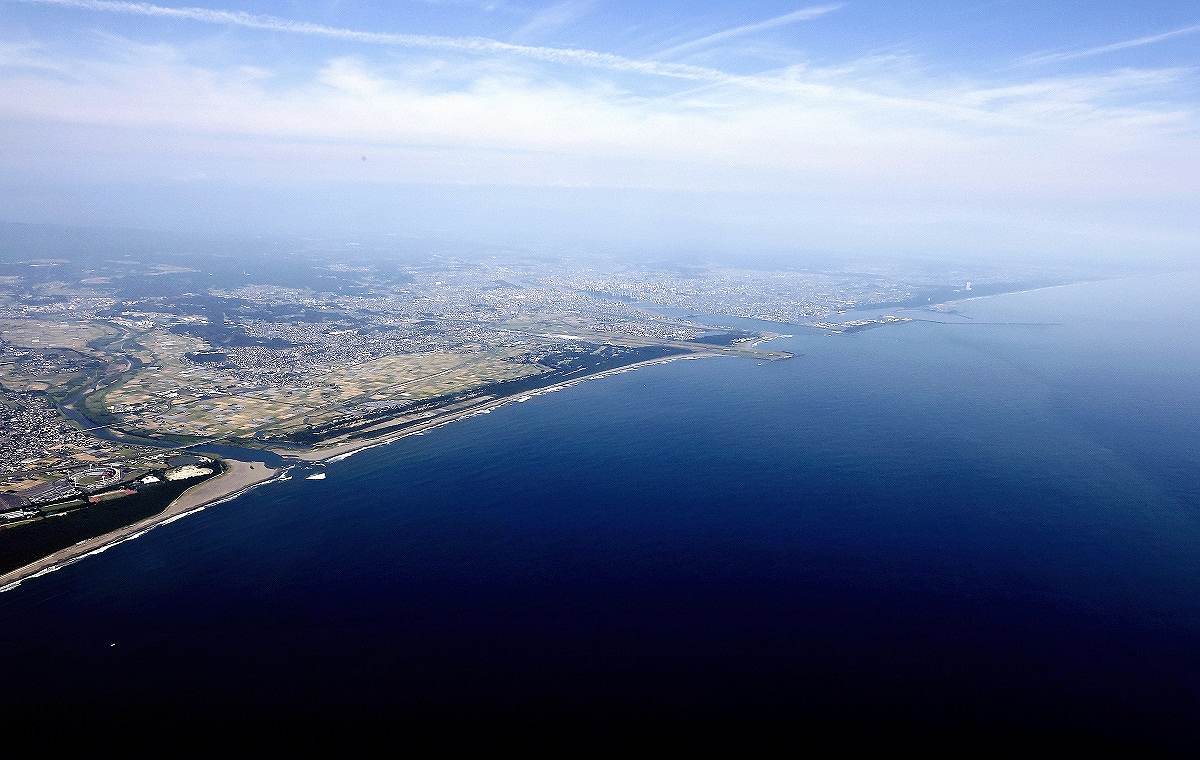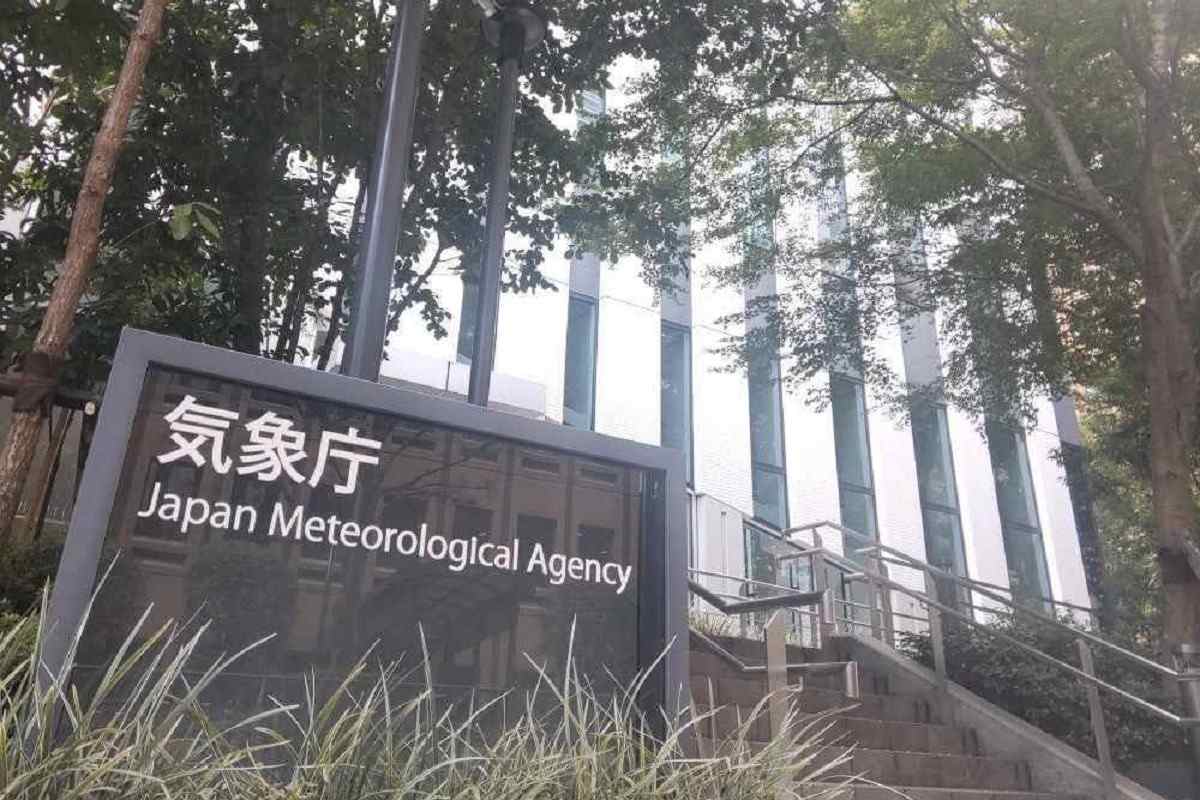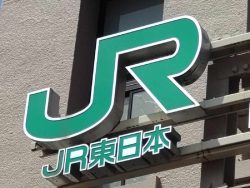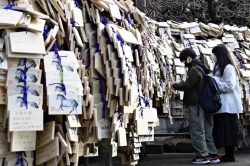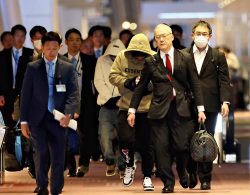Japan Megathrust Earthquake Attention Sparks Emergency Preparations in Elderly Care Facilities, Hospitals

Information about delays on the Tokaido Shinkansen is seen on a platform at JR Nagoya Station on Saturday.
17:35 JST, August 11, 2024
Nursing homes and hospitals in areas covered by the Megathrust Earthquake Attention advisory are scrambling to prepare for any eventuality resulting from a Nankai Trough earthquake.
The facilities are tallying their emergency supplies and moving hospitalized patients to higher floors.
Concerns are rife over the possibility of access being cut off to such facilities and possible delays in evacuating the people inside, and a key challenge now is how best to protect the most vulnerable during a disaster.
Staff members at a special nursing home on the artificial island of Sakishima in Osaka Bay checked the facility’s stockpile of emergency food and cooking equipment after the government issued the advisory. The facility has a five-day supply of provisions, but the approximately 160 residents all require wheelchairs or assistance to move.
“If an earthquake occurs at night or transportation networks are paralyzed, we will have a limited supply of goods and few available staff,” said the director of the facility.
Although the facility is not in an area feared to be inundated by a tsunami, the director said, “If that happens, we can’t simply say it was ‘unexpected.’” The director also indicated that in the event of an earthquake, staff will carry the 20 residents on the second floor to the third floor to escape any tsunami.
On Friday, a psychiatric hospital facing Urado Bay in Kochi City moved nine patients who would have trouble moving up in the building on their own from the third floor to higher floors, a measure that will be in place until the advisor is lifted.
“We will stay vigilant and consider all possible scenarios,” said a hospital representative.
Exercise caution during travel, return home
With the advisory ongoing, Saturday marked the peak period for travelers returning to their hometowns or heading to vacation spots during the Bon holiday. The Shinkansen platforms at JR Tokyo Station were crowded from the morning.
A 21-year-old company employee living in Suginami Ward, Tokyo, who was traveling to Aichi Prefecture, said: “I’m not familiar with the area, so I don’t know where the evacuation sites are, which makes me anxious. I plan to be careful.”
According to Central Japan Railway Co., the Tokaido Shinkansen trains are running at a reduced maximum speed of 230 kph between Mishima Station in Shizuoka Prefecture and Mikawa-Anjo Station in Aichi Prefecture, causing delays of up to 20 minutes on Saturday.
Japan Airlines Co. and All Nippon Airways Co. are operating as usual but are carrying more fuel than usual on flights to and from areas covered by the advisory. In the case of an emergency, the airlines have plans to divert flights to airports outside the affected regions.
No abnormal strains observed
On Saturday, the Japan Meteorological Agency released a commentary on the Nankai Trough, which stated that no abnormal underground strains had been observed in the expected epicenter.
Meanwhile, an official at the Cabinet Office said Saturday that it would stop encouraging people in areas covered by the advisory to make disaster preparations at 5 p.m. on Thursday if no significant developments occur.
Related Tags
"Society" POPULAR ARTICLE
-

Tokyo Zoo Wolf Believed to Have Used Vegetation Growing on Wall to Climb, Escape; Animal Living Happily after Recapture
-

JAL, ANA Cancel Flights During 3-day Holiday Weekend due to Blizzard
-

Snow Expected in Tokyo, Neighboring Prefectures from Jan. 2 Afternoon to Jan. 3; 5-Centimeter Snow Fall Expected in Hakone, Tama, and Chichibu Areas
-

Tokyo, Yokohama Observe First Snowfall of Season; 1 Day Earlier than Average Year
-

M6.2 Earthquake Hits Japan’s Tottori, Shimane Prefectures; No Tsunami Threat (Update 4)
JN ACCESS RANKING
-

As Chinese Tourists Shun Japan, Hotels and Stores Suffer
-

BOJ Gov. Ueda: Highly Likely Mechanism for Rising Wages, Prices Will Be Maintained
-

Core Inflation in Tokyo Slows in December but Stays above BOJ Target
-

Osaka-Kansai Expo’s Economic Impact Estimated at ¥3.6 Trillion, Takes Actual Visitor Numbers into Account
-

Japan Govt Adopts Measures to Curb Mega Solar Power Plant Projects Amid Environmental Concerns

